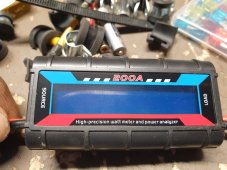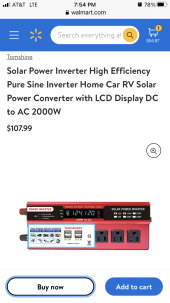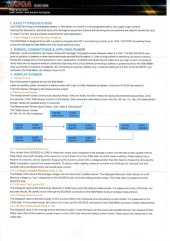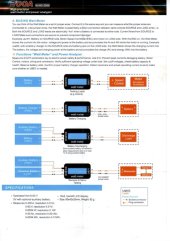Is that a pure sine wave inverter?
Yes it is. Thanks for the warning.
Uhm actually it is not... Probarbly why I got it for free. ?
On the other hand, I'm only going to run LED lights on it. So I'll just keep it for that.
To not keep opening new threads I'll just continue on this one. After all; it is still the same "trial and error project" ??
On the pic below you can see it clearly marked on the inverter. I'll guess my eye just caught "... sin wave... 1000W" and my brain didn't go any further. Well it can deliver plenty off power for the lights in my workshop so for now I just leave it like this.
But I'll keep an eye on it not to connect other stuff to it. Once I get the hang of the Solar-Virus I will get me more panels, decent batteries and then a proper inverter to power electronics for the house. I mean as stated; I'm still in the experimental phase and so far I've spend not more than just a few $ on connectors, the 50A security and the 150 fuse.
Will not use a 7 $ PWM on a 500 $ battery as also not a 100 $ alibaba inverter on 5000 $ of household appliances?

So as follows;
1, The panel cable comes to the PWM through a main switch so I can shut it off.
2, From the PWM throught the 50A safety switch to the batteries,
3, From the batteries to the inverter via a 150A fuse.
There was no 125A available at time of ordering, but I think it will be fine. (If not please comment)
4, From the PWM to a light switch that powers a 12V flood light.
---EDIT--- I have another battery switch. I like to put that between the battery and the inverter. Would I put the switch before or after the fuse?? THANKS ---EDIT---
I know a lot of people advise against using the power outlet on your SCC but 50 watts must be possible, not ? If it is really that bad why do they provide it in the first place? I like to use the programmable mode to have 1 or 2 hours of light outdoors in the winter. (please comment)
The 2 big square red switches are now powered of the grid. they switch the wall outlet on and off where the LED strings are on.
I will rewire them to the inverter as soon as I can find the parts needed for that. For now I'll be using a extension cord.
By the way I ordered a 125 A fuse from amazon that was so small I couldn't even get the cable connector for a 125A wire on that. See the difference in the picture with the second one. ( first one is on its way back to amazon)

Final question for today:
I have the following Amp/Volt meter
LINK
It says 200 A but there is a 12AWG wire on this thing.
I like to connect it so I can monitor the inverter. I want to see how much amps it pulls as I have the lights on
But have no clue how to wire this thing. Please advise.

Again thanks for the patience and the input. Will keep you updated on any progress.









